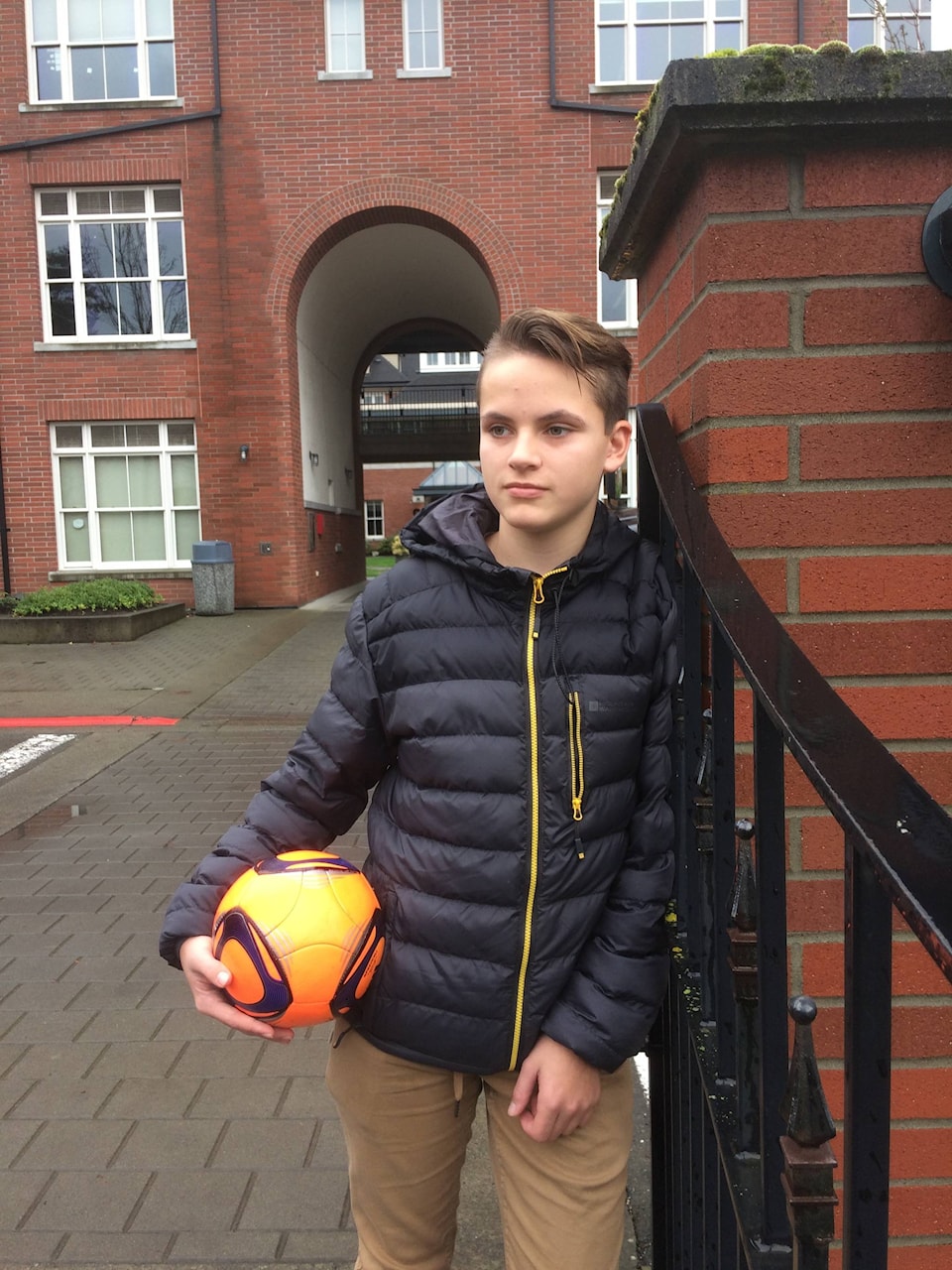Grade 10 student Gavin Banting was surprised in September when he arrived at his new school, St. Michaels University, and was told he was ineligible to play for the school’s soccer team.
Banting and his parents settled on the school after a thorough search of Greater Victoria options earlier this year. Banting moved from Nanoose Bay to SMUS so he could be closer to his soccer team, the Island’s top high performance program for his age group.
Once he arrived, he found the school and on-campus life so engaging he chose to withdraw from the demands of high performance soccer in favour of further engaging in campus life while assuming he could still play soccer for the school team.
“[Gavin] didn’t go to SMUS for soccer, we didn’t know much about their soccer program. I heard the senior team won the league last year but just heard that recently,” said Banting’s father, Murray.
For Banting, it was frustrating but he moved on, taking up a role with the basketball team and joining a local club soccer team.
Unfortunately, Banting had represented his former school, Aspengrove (Nanaimo), in a one-weekend soccer tournament last year, the only games Aspengrove played that season. That made Banting subject to B.C. School Sports eligibility rules. The rules aren’t new – they’re based on the same transfer rules that kept Steve Nash on the sidelines for a season with St. Michaels in 1990-91 when he left Mount Douglas.
Transfers in Greater Victoria for sports reasons are quite common. But they’re becoming increasingly more difficult. Last year in B.C., 165 students were found ineligible to play a certain sport out of 987 eligibility submissions.
“That’s out of 90,000 students, I think that paints a pretty good picture,” said Jordan Abney, executive director of BCSS.
With the projected surge of the SD61 student population by 2,000 over the next decade, the board recently upped its proof of residency rules and reranked its enrolment priorities. Incoming middle school and high school students to SD61 schools will be prioritized by in-catchment students first.
Transfer rules have also strengthened at the provincial level. BCSS amended a somewhat arbitrary academic transfer rule for BCSS (but also an effective one), to become a cut and dry rule stating students need to prove they’ve enrolled in three courses that were previously unavailable to them.
Banting didn’t qualify.
Neither did a foursome of Grade 10 basketball players who left Spectrum for Lambrick Park this year but are waiting the year out due to BCSS rules.
It’s not the first time a player left Spectrum, though the school has also graduated plenty of top-end athletes, such as Shanice Marcelle, who was named Canada’s top female university athlete.
Four years ago Lauren Yearwood left Spectrum to play senior basketball for Oak Bay High. (On a sidenote, Yearwood’s actually sitting out this year, per NCAA rules, as she has transferred from Oregon Ducks to Nash’s alma mater, Santa Clara.)
The penalty of sitting out a year is an old rule to protect schools from loading up sports teams.
Abney said what people forget is BCSS rules are made by the schools themselves, as the eligibility rules are determined by the members.
“What our policies are meant to restrict is movement based on athletic activities,” Abney said. “School sport in its purest form is that you go to school for an education, and athletics is a complement to education, not the reason to transfer schools. Students cannot register out of catchment on the grounds that their catchment school does not have a specific sports program that they want to be part of.”
All that said, students are still welcome to transfer in their high school years, and SD61 wants to accommodate student needs as best as possible, said spokesperson Lisa McPhail.
Oak Bay High, for example, has been a school prioritized by local athletes and students in general. The newly completed building is already at capacity, but there is some room. And wherever there is room, non-catchment students will be accepted, albeit by lottery, and not first-come first-serve.
reporter@saanichnews.com
